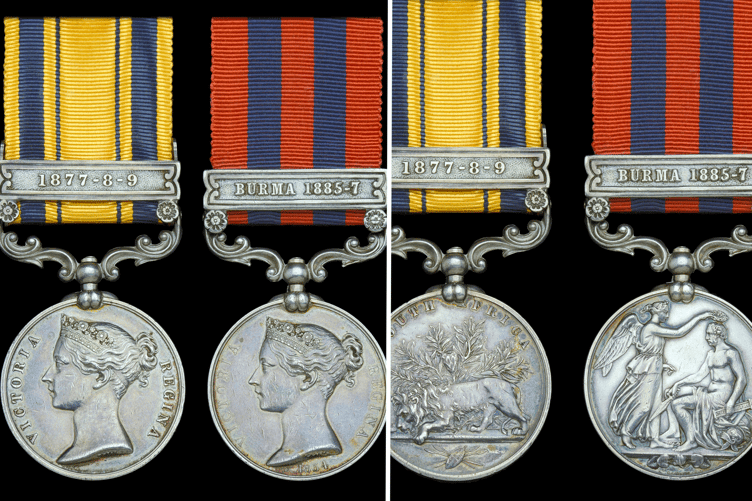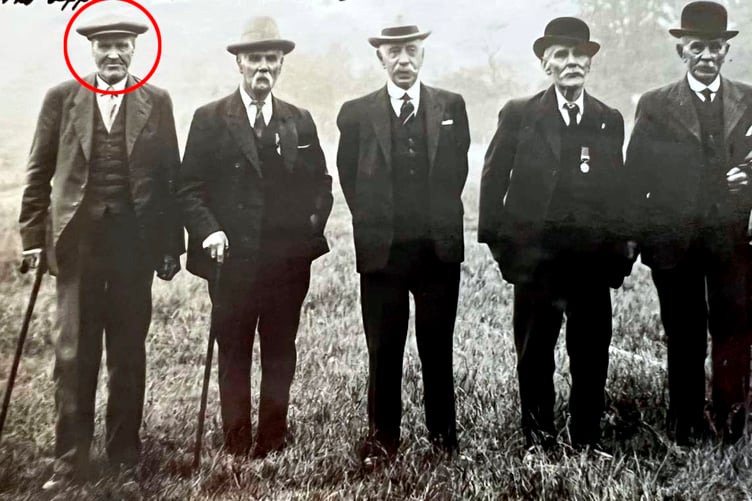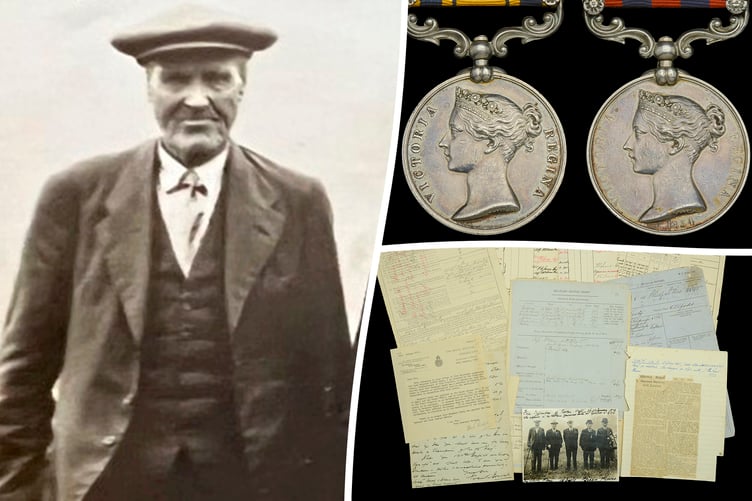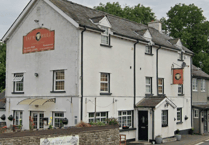Medals from one of the last-known survivors of the legendary Battle of Rorke’s Drift - immortalised in the film Zulu - will go on sale later this month.
The medals of Alfred Saxty, who was just 22 at the time of the famous battle in January 1879 are expected to fetch up to £20,000.

Saxty was one of just over 150 British and colonial troops who bravely defended the station of Rorke’s Drift in South Africa against up to 4,000 Zulu warriors in what is still recognised as one of the most famous battles in British Military history.
His campaign medals from his South African and Burmese campaigns will go on sale at auction house Noonans’ sale of Orders, Decorations, Medals and Militaria next month.
Saxty, who served as a Corporal in ‘B’ Company of 2nd Battalion, 24th Foot, was one of the ‘last few survivors’ of the battle, which has since been the subject of several films; most notably the 1964 film Zulu, starring Michael Caine.
Saxty was quickly promoted to the rank of Sergeant the day after the battle.
He later served in Burma and India and was eventually discharged in February 1895 before dying in Newport, Wales, where he lived with his sister, in 1936, aged 77.

Christopher Mellor-Hill, Head of Client Liaison at Noonans, explained why his pair of campaign medals from South Africa and Burma were expected to fetch a high price.
He said: “Alfred Saxty of 2nd Battalion, 24th Foot served as a Corporal in ‘B’ Company at the defence, and was one of the last few survivors, of Rorke’s Drift.
“He was just 22 years old when he was involved in one of the most famous battles in British military history, which saw just over 150 British and colonial troops defend the South African hospital against attacks by 3,000 to 4,000 Zulu warriors in January 1879.
“In fact, Saxty was promoted to Sergeant the day after the defence. Medals linked to this conflict always attract substantial attention.”
Saxty was born at Buckland Dinham, near Frome in Somerset, and enlisted for 25 Brigade at Newport, Monmouthshire in September 1876, aged 19.
He was posted to the 2nd Battalion, 24th Foot at Brecon two days later and served in South Africa from 1 February 1878 to 12 January 1880, during the Anglo-Zulu War, fought between the British Empire and the Zulu Kingdom in 1879.
Britain, which instigated the war in an effort to emulate the previous century’s forming of a federation in Canada, eventually emerged victorious from the conflict, ending Zulu dominance in the region of southern Africa.
Saxty, along with 150 fellow British and colonial comrades, successfully defended the mission station of Rorke’s Drift against sustained attacks from between 3,000 and 4,000 Zulu warriors over 12 hours of fierce fighting.
After seven months of service in the Mediterranean, Saxty’s regiment moved to India in August 1880 and served in Burma between May 1886 and January 1887, before returning to India again.
Saxty was confined in May 1881 and charged with being drunk on duty.
He was sentenced by Court Martial to be reduced to the rank of Private, and to serve 56 days imprisonment with hard labour and stoppage of pay, in addition to being fined £1 and forfeited Good Conduct Pay.
He steadily regained his steps in rank to become Sergeant again in December of 1885.
After his service in the Burma campaign, Saxty re-engaged for the 1st Battalion, Bedfordshire Regiment at Madras in October 1887, ‘for such term as shall complete 21 years’ service.’
He transferred to the 2nd Battalion of that regiment on New Year’s Day 1888 and then transferred to the 2nd Battalion, Royal Inniskilling Fusiliers on 14 July 1891.
Reduced to the rank of Corporal in October 1894, he was discharged at his own request at Thayetmyo, Burma, on 28 February 1895.
Saxty was admitted to In-Pension at Chelsea Hospital on 12 June 1930 but reverted to Out-Pension in October 1933 to live with his sister in Newport, Monmouthshire, where he died three years later, at the age of 77.
He was buried with military honours at St Wollos Cemetery, Newport, on 15 July 1936.
Noonans’ Orders, Decorations, Medals and Militaria sale will be held on Wednesday, April 19.



-with-friends.jpeg?width=209&height=140&crop=209:145,smart&quality=75)

Comments
This article has no comments yet. Be the first to leave a comment.